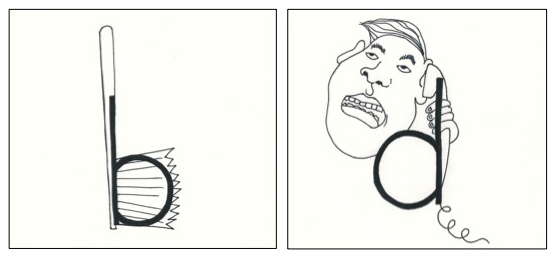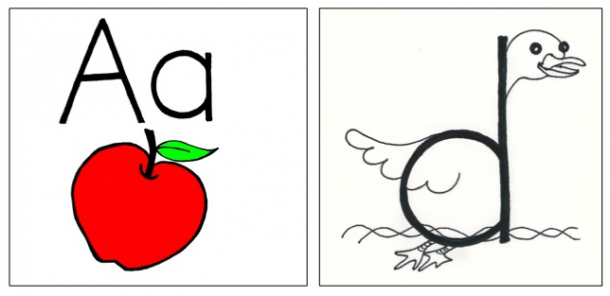Pictorial Mnemonics x Sound Contrasting = More Effective English Teaching; Waseda University and University of Tokyo Joint Research Findings
Tue, Dec 10, 2013-
Tags
New research by Professor Emmanuel Manalo of Waseda University and Assistant Professor Yuri Uesaka of University of Tokyo has found that mnemonic images and explicit sound contrasting help Japanese children learn more effectively the sounds of the English alphabet.
Improving English language learning has been a stated priority of the government for two decades. However, Japanese children continue to perform poorly relative to other countries in assessments of English language skills. For this reason, research on methods of instruction is an extremely important field. Strategies such as those tested in this study could help improve the outcomes of English language teaching in Japanese schools.
This research is published in the Journal of Applied Research in Memory and Cognition (JARMAC) .
Pictorial Mnemonics and Sound Contrasting Found Effective for Teaching English Alphabet Sounds
New research findings by Emmanuel Manalo (Professor, Waseda University), Yuri Uesaka (Assistant Professor, The University of Tokyo), and Koki Sekitani (PhD candidate, The University of Tokyo) show that mnemonic images and explicit sound contrasting help Japanese children to more effectively learn the sounds of the letters of the English alphabet.

The mnemonic images they used linked the shapes of the alphabet letters with images of Japanese words that begin with those letters. Examples are shown below for the letter b, linked with “bulashi” (brush in Japanese), and d, linked with “denwa” (phone in Japanese). Through such linking, the appearance of the alphabet letters (for example, the shape of the letter b) serves as a reminder for the image of object (the brush) which in turn serves as a reminder for the sound of the letter (the phoneme sound /b/).
For explicit sound contrasting, the researchers emphasized the differences between the phoneme sounds of the letters (for example, the /f/ sound of the letter f) and the sounds of kana syllables they are often confused with (for example, “fu”). Instruction included reference to “loan words” (foreign-originated words that have been assimilated in the Japanese language, like “fulawa” for “flower”). For example, the children were told that when “fulawa” is pronounced in Japanese, the first sound is a syllable “fu” which includes the vowel sound /u/ connected to the /f/ sound. In contrast, in English, it is not necessary to include the vowel sound to the consonant sound in phonemes. In the conditions with sound contrasting, students were provided sound expression practice after receiving instruction about the difference in sound unit pronunciation in the two languages.
Background to this Research
Learning to read in English is difficult even for many children who are native English speakers. However, it is even more difficult for children whose first language is not English, such as Japanese children. In Japanese, the name of the script character is usually the same as the sound it makes (for example, the character “ね” is called “ne” and the sound it makes is also “ne”). In contrast, in English, the name and the sound of the letters are usually not the same (for example, the letter “n” is called “en” but has the sound /n/). Moreover, for Japanese children, learning phonemic sounds is particularly difficult and confusing because the Japanese language is based on a different sound unit called mora, most of which are consonant-vowel combinations. Such structural differences between the two script systems make it difficult for Japanese children to learn English alphabet letter-sound correspondence, so it is important to provide opportunities for children to better understand those differences.

As can be seen in many illustrated alphabet wall charts, letter-picture associations to help in learning the alphabet sounds are not new. However, the ones commonly used (like the one shown of the letter a and apple on the right) are not very effective because the letter and the image do not serve as reminders for each other. Even if the images are integrated, like the one shown above of the letter d and duck, they would not be helpful if English words are used and the children do not always know those words. So the new approach used in this research of linking alphabet letters with Japanese words was examined.
Research Methods
In the study, 140 6th-grade Japanese children participated. The participants knew the names of the alphabet letters, but they did not sufficiently know about the phoneme sounds associated with each of those letters. This means that they could name the letters – for example, they could identify F or M by the letter names of /ef/ or /em/ – but they could not correctly say what sounds the letters make – for example, /f/ or /m/. They were taught English alphabet letter sounds, with or without the use of mnemonic images or explicit sound contrasting. The phonemes that correspond to 12 consonant letters were taught. The instructions were provided in two 45-minute regular class periods. All children received the same amount of instruction on the same letter-sound combinations; the only difference was whether they were also given the mnemonic images to use or explicitly told about the kana sounds that phonemes could be confused with. The children were tested before and after the two instruction sessions on their knowledge about the sounds associated with each of the consonant letters dealt with in the study.
What the Results Revealed
The results of the study showed that, on average, all the children made some improvements in their letter-sound knowledge following the instructions provided. However, the children who were provided instructions with mnemonic images and explicit sound contrasting made greater improvements. The table below shows the average scores and standard deviations obtained by the children according to the kinds of instruction they received. It is clear from this table that those taught with mnemonic images and explicit sound contrasting made better improvements in their letter-sound knowledge. Statistical analyses confirmed these differences in improvement.

Significance of the Findings
Improving English language learning in Japan is a high priority that has been signaled by successive governments during the past two decades. Japan, however, continues to perform poorly compared to other countries in raising the English language skills of its citizens. Earlier this year, a government panel on education reform headed by Waseda University’s President, Kaoru Kamata, emphasized the urgent need to enhance English language education starting from the elementary school level. Research into strategies that could enhance such education is extremely important. Strategies such as those developed in this study could make important contributions to improving the outcomes of English language learning of children in schools.
Publication Details and Enquiries about the Study
This research has been published in the Journal of Applied Research in Memory and Cognition (JARMAC). It can be viewed online. Publication details of the paper are as follows:
Manalo, E., Uesaka, Y., & Sekitani, K. (2013). Using mnemonic images and explicit sound contrasting to help Japanese children learn English alphabet sounds. Journal of Applied Research in Memory and Cognition, 2,216–221.











